|
Field
Guide IDs: BREEDING:
Large marsh,
prairie slough and pothole, lake, lagoon, and bay
with emergent veg. 1 brood. DISPLAYS:
See:
Duck
Displays. NEST:
Usu concealed in
emergent veg over shallow water. Heavy basket of
rushes or cattails atop matted dead aquatic veg
anchored, to emergent veg. Lined with finer
materials and down. Occ on dry ground. EGGS:
Pale olive buff.
2.4" (61 mm). DIET:
Aquatic veg;
aquatic inverts, esp insects, crustaceans,
snails. CONSERVATION:
Winters s to
Guatemala, Cuba, Jamaica, and Bahamas. NOTES:
Females follow one
of three nesting strategies: (1) incubate their own
clutch, (2) incubate their own clutch and "dump"
some eggs in other nests, or (3) entirely
parasitic, laying their eggs in other nests and
having no nest of their own. Laying in nests of
other Redheads is more successful than laying in
nests of other species (chief victim is Canvasback,
but other ducks readily parasitized, as well).
Females use ca. 50% of fat stores (energy reserves)
during early period of laying and 30% through
incubation. ESSAYS: Parasitized
Ducks;
Metallic
Poisons;
Commensal
Feeding;
Dabblers
vs. Divers;
Brood
Parasitism;
American
Coots. REFERENCES:
Bellrose, 1976;
Gooders and Boyer, 1986; Joyner, 1983; Noyes and
Jarvis, 1985. |
